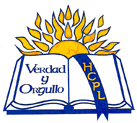VERDAD y ORGULLO TRUTH AND PRIDE
“Tell me oh noble soldiers, where is that courage which you so professed when you enlisted in this noble cause? Why did you think nothing could resist the might of your arms. You now turn back and ignobly desert? What explanation have you for this conduct if you hold yourselves men? For shame! Such are not the actions of Spaniards! Even though everything else might be lost, there is yet land on the bank of some mighty river where we may raise a great city and thus immortalize our names. To such a place we can go and it is better to halt and rest than to retrace our steps and weave upon ourselves and our posterity a stigma which can never be erased.” Doña Eufemia
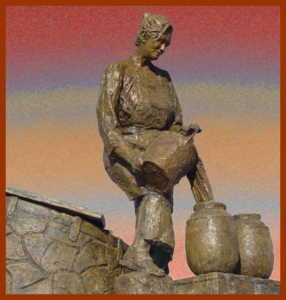
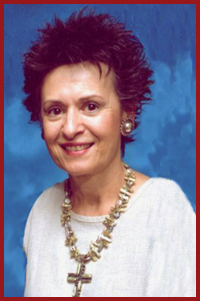
2011 Doña Eufemia – Hope Rivera “Art Promoter”
Hope Rivera was born the seventh of twelve children in Ogden, Utah to native New Mexican parents, Frank and Julia (Quintana) Rivera in 1953. To support his children, her father would eventually move the family from New Mexico to Utah, and finally settle in California.
After marrying Reynaldo “Sonny” Rivera in 1986, she moved to the Land of Enchantment. Upon moving to her family’s native soil, she immediately felt a connection with her roots, a sense of belonging. Her brother would later trace their family ancestry back to the pilgrims who came with Don Juan De Oñate in 1598.
Originally from a banking background, Hope decided to look for a job that would compliment her husband’s art career. One day, while in Santa Fe, Hope mentioned the possibility of working at the prestigious Fenn Galleries. Upon hearing this, Sonny immediately pulled up in front of the gallery and encouraged Hope to seek employment at the Fenn. One month later, Hope went to work for the gallery for nine years.
Aside from working outside the home, Hope is also instrumental in managing the family sculpture business, which has led to travels throughout the world from Spain to France, Portugal, England, Mexico, Alaska, and most of the United States. Hope delights in the fact that her husband Reynaldo Rivera’s art work has contributed to instilling a sense of pride in one’s heritage. The monumental sculpture “La Jornada” is her all-time favorite!
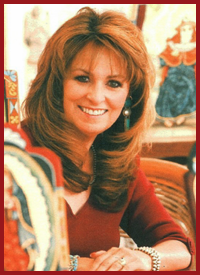
2010 Doña Eufemia Doña Eufemia: Arlene Cisneros Sena, SANTERA
Arlene was born in San Luis, Colorado and married Richard E. Sena.
Since her entry into NM Spanish Market in 1992, Arlene’s work has achieved national and international acclaim. In addition to countless private collections, her santos have been acquired by the many museums, including the Vatican, which houses a reliquary crafted in collaboration with jeweler Lawrence Baca.
A recipient of the Archbishop’s Award for Excellence in 2001, Arlene has recently completed a number of prestigious large-scale commissions, including an altar screen for the Blessed Sacrament Chapel inside Santa Fe’s Saint Fracnis Cathedral, as well as retablos for the churches of Santa Maria de la Paz, San Isidor and Saint Anne’s.
Arlene said, santero art speaks for itself…and speaks to each viewer in a different way. One person may appreciate its artistic qualities, another may respond to this object of devotion. Today, I carry on the tradition and faith of a family where saints were very much a part of our lives. As a young girl I was surrounded with home altars and shrines devoted to the santos that protected and cared for the family. I call may self a santera, and create the devotional pieces that will be treasured, blessed and appreciated by its owner. I am expressing myself by acknowledging my culture, and preserving an art form for future generation to carry on.
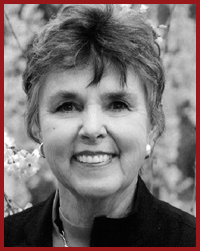
Jody Polk Schwartz 2009 doña Eufemia Awardee, Fundraiser, Photographer, El Paso, Texas
Jody Polk Schwartz is a professional photographer who has specialized in child and family photography in environmental settings for 25 years. She has won many awards and has produced postcards for many years entitled “Images of El Paso” depicting the colorful and authentic flavor of the border metropolis of El Paso and Ciudad Juarez.
Jody has studied in Switzerland and France and graduated from the College of William and Mary. She has volunteered for many civic organizations and was involved with a small tour company that took women to France for 20 years.
One of her proudest accomplishments was being a part of the small group of dedicated volunteers who saw to the successful completion of the don Juan de Oñate monument, located at the entrance of the El Paso International Airport, in April of 2007. It was sculpted by John Houser and his son Ethan Houser. It weighs 17 tons and is the largest equestrian bronze in the world.
Jody was the fund raising co-chair of the XII Travelers Memorial of the Southwest Board, which raised over 1.25 million dollars over a 10-year period to make the monument a reality. She was an inductee in El Paso’s Women’s Hall of Fame in the arts category in 2000, principally for her participation as a board member of the XII Travelers Memorial of the Southwest non-profit board. The board was formed to support the vision of sculptor John Houser, which is to highlight the 400 year rich history of El Paso and the region through the creation of over-life size monuments in downtown El Paso.
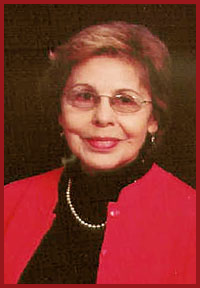
Patricia Baca Black Esterly doña Eufemia 2008
Pat has worked with the New Mexico Genealogical Society, as editor she has published a translated 1821 Santa Fe Census, and started the NMGS web site. Working with Mort Erwin, she compiled and published a CD with the First Forty Years of the New Mexico Genealogist.
Her experience has found that when researching New Mexico families, Catholic Church records are the best and most accurate of all genealogy tools. Working together, Armando Sandoval, Angela Lewis, they found a way for genealogists to locate specific church records -by listing every Catholic Church in a locale, linking each church with the current county, and providing the film numbers available for research. It began with New Mexico, and later expanded to include southern Colorado. The project, Locating Catholic Church Records in New Mexico, is published on the NMGS web site.
The most exciting reward for her efforts came to Pat and her whole family when she was able to document their lineage to several of the families who arrived here in 1598.
Patricia Jane Black was the youngest of nine children born to Jose Trivinio Black and Maria Teresita Cunningham Baca. The family lived in the Barelas neighborhood in Alburquerque. When Pat was six years old her mother died. Pat commented that relatives and various siblings cared for her (earning them a place in heaven for patience). Pat married Romeo Moya with whom she had four children; all four have college degrees, having graduated either magma or summa cum laude. Later Pat married Robert Esterly, a retiree of Sandia Laboratories who brought three more children.
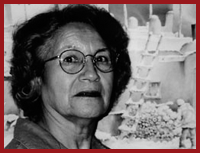
Maclovia B. Zamora 2007 doña Eufemia
A Curandera who has kept the tradition of using herbs for healing purposes alive by conducting workshops for National PHD seminars and UNM students at B. Ruppe Drugs, the oldest existing drugstore in Albuquerque that sells a wide range of yerbas (herbs). She has conducted seminars at the Smithsonian Institution, Maxwell Museum, The Martinez Hacienda in Taos, Las Golondrinas, TVI, and numerous other schools. Professor Mary Swanders of the University of Iowa has written a book about Maclovia and her efforts to promote the holistic medicine of our ancestors, Desert Pilgrim. Maclovia is among the women chosen to be featured in the book, Las Mujeres Valiosas published by the Hispanic Women’s Council.
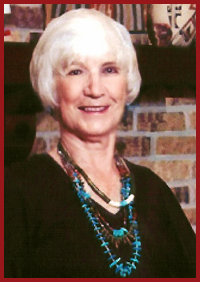
Pauline Chávez Bent 2006 Doña Eufemia Awardee
A New Mexico native born in Atarque, a place located about 30 miles south of Zuni Pueblo. Her mother was also born there and her father’s family was from Cubero and St. Johns, Arizona.
Primarily a genealogist and researcher, Pauline belongs to many organizations. She was a founder of the California Hispanic Genealogy Society, founder and President of the GSHA- Southern California, member of the HGRC publicity committee, member NMGS and the NSHG-Denver. She has had many articles published by these organizations.
She has written articles for El Farolito, Tradition Revista Magazine , Familia Newsletter, the NM State Archives publication Quipu. She also wrote an article entitled The First Thanksgiving, the Pilgrims missed it! In 1989 Vista Magazine did an extensive article on her and her mother and her research.
She started an organization named the Hidalgos and they meet at her home to research genealogy. She has used her own funds to donate books, set up displays and give presentations in the Huntington Beach Library, the Anaheim Library and the Apache County Museum in St, Johns, Arizona. Pauline works hard to protect and preserve Spanish and New Mexican culture.
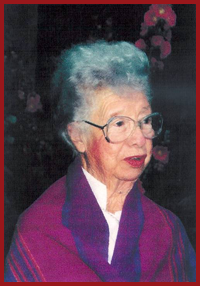
Corina Santistevan 2005 Dona Eufemia Awardee
During an Old Spanish Trails conference, Marc Simmons introduced Corina Aurora Santistevan as the true matriarch of Taos. She was born in Cordillera near Taos, New Mexico. She taught in a primary one-room school near her birthplace for 13 years.
She holds a Master of Arts in Curriculum Supervision and Education from New Mexico State University with a dual major in Modern Languages and Education. She took advanced studies at Stanford University for two years and studies at the University of Mexico City and other colleges and universities.
As a teacher, she was presented with prestigious national awards. Corina received the honorary life membership in the California Congress of Parents and Teachers, Outstanding Teachers of America – 1972, as well as, Sigma Delta Pi and Phi Mu Tau Keys. She also served on many boards such as the Kit Carson Museum Foundation, Millicent Rogers Museum and Taos County Historical Society. She served on the Spanish Advisory Council of the Hacienda Martinez and has done extensive research on Padre Antonio Jose Martinez.
She was involved with many publications and KNME videos about the architecture and history of the Church of San Francisco in Ranchos de Taos and has lectured to architects, historians, teachers, students, archeologists, seminarian and other professional groups. Dona Corina has been a church archivist for the San Francisco de Asis Church at Ranchos de Taos. She designed the script for a brochure and video on the church and the mystery painting called The Shadow of the Cross, and another booklet memorializing Father Jose A Garcia, the first pastor of the Ranchos parish entitled Symphony in Mud.
Dona Corina is a Charter Member of the Taos County Historical Society and Taos Artists’ Society. She authored Women of Taos and was co-author of Centuries of Hands with well-known architect Van Doren Hooker. She has
contributed extensive writings for Christmas in Taos published by Romero Publishing Company and for Ayer y Hoy, a Taos County Historical Society publication.
At present she is working with the Taos County Historical Society committee on the history of Taos book which will be ready for publication in the future.
Dona Corina Aurora Santistevan is truly a Dona Eufemia, leading the way in preservation and promotion of our Spanish culture and history.
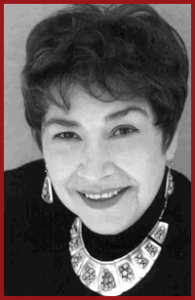
Doña Socorro Vigil Aragón, 2004 Doña Eufemia
A visionary and educator, Doña Socorro is a native of Santa Fé. She and her husband Arthur have five daughters and seven grandchildren. The family has incorporated many of the hispano traditional family customs in their weddings and baptisms and observes them during the Lenten and Christmas seasons. As a teacher, she delivered speeches on these subjects to schools and organizations and helped young girls prepare to serve as fiesta queens. As a radio host for Tesoros de Nuestra Vida on a bilingual station, she featured our New Mexican Spanish heritage, culture, traditions and folklore. She has served on the Cofradía de la Conquistadora for over 11 years. For 43 years, she has served on La Sociedad Folklórica. She designed the organization’s coat of arms and their organizational pins. She served on the Museum of New Mexico Foundation for 15 years and supported New Mexico’s museums and the Friends of the Palace Board. El Rancho de las Golondrinas Living Museum has also captured her attention since 1972. In 1998 she was vice-chair of the Cuartocentenario Celebration. In 2003 she chaired Santa Fe’s Cuartocentenario Cathedral Park and Monument Committee to oversee the renovation of Cathedral Park, including the design and sculpting of the bronze monument to commemorate the Spanish colonists of 1598. Socorro has spent most of her life promoting our culture, traditions and customs.
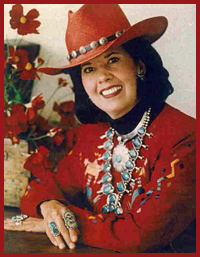
Eva Torres Aschenbrener 2003 Doña Eufemia
Speech given by Harriet McCallum, Regent National Society Daughters of the
American Revolution Stephen Watts Kearny Chapter,Santa Fe, New Mexico
It’s gives me a great deal of pleasure being invited to tell you why I believe the New Mexico Hispanic Culture Preservation League has chosen so wisely and so well when you selected my friend Eva Aschenbrener as this year’s recipient of the Doña Eufemia Award.
I first met Eva 7 years ago while I was in training as a docent at the Palace of the Governors. A family genealogist myself, I loved the way in which Eva shared the stories of her ancestors and their place in the rich history of New Mexico.
We also found that we had much in common. Both Eva and I are native daughters of old, historic Catholic cities—Santa Fe and New Orleans. And we had both been raised “right,” by that I mean we had mothers and grandmothers, Eva’s Spanish, mine French and Spanish who made sure we knew the proper conduct of a lady. Schooling under French nuns just reinforced those lessons.
It was my interest in genealogy that led me to apply for membership in the Daughters of the American Revolution in 1999, an organization of descendants of American “Patriot” ancestors, men and women, who helped win our freedom from the British. The DAR is a patriotic, educational, charitable, and non-political organization founded in 1890, it’s Santa Fe Chapter in 1898. Many of you have seen our markers and monuments around the Santa Fe Plaza and along the Santa Fe Trail. Our motto is “God, Home & Country.”
One of the most exciting moments for me in DAR was when I first learned of donations, requested by the King of Spain in 1780 of his subjects in the New World to aid and support the American Colonists. I know many of you have read the most definitive American work to date on this subject written by Dr. Tom Chavez entitled, An Intrinsic Gift: Spain and the Independence of the United States. If not, by all means, do.
You may be wondering what this has to do with DAR. Our National Society has been actively searching for those who assisted in any manner the fight for Independence. This means not only participation in the active battles in the original 13 colonies and the battles fought by French, Spanish and German soldiers in Louisiana under Spanish Governor Bernardo de Galvez, it also includes persons who provided any other support, such as money and/or supplies. Chapter members in Spain, Louisiana, Florida, Mexico and New Mexico are currently looking for the “lists” of Spain contributors.
In the summer of 2001, I began searching for the records to support the contributions made in New Mexico. The Santa Fe Presidio was the most obvious place to begin. During a period of about six months, I researched in the New Mexico Archives and Special collections in Santa Fe and Albuquerque, as well as archives in El Paso and Tucson. To make a long story short I made some wonderful discoveries and was able to prove, via historic documentation, that Governor Juan Bautista de Anza and the soldiers of the Santa Fe Presidio collected donations during the period of April 13, 1782, until about mid-November of that year.
This, of course, was wonderful but to bring the proof to the DAR required finding a descendant of one of the soldiers. I didn’t have to look far–in fact, it was to Eva I first applied. But, would she want to do this? Those of you who know Eva, those many of you here tonight, know that the history and culture of New Mexico, old and new, are very close to Eva’s heart. Of course she helped–she helped me in so many ways–she was on board even before the proofs were found. Eva volunteered her Presidio ancestor, Juan Luis de Herrera. Next she put me in touch with a genealogist and historian truly gifted in translating colonial Spanish documents, Jose Antonio Esquibel, who most of you know and to whom I am very grateful. In March 2002 Eva was inducted into the NSDAR in a ceremony at the Palace of the Governors–the first descendant of a Santa Fe Presidio soldier.
Each of us realized immediately the lesson to be learned from this research–that the people of the great Southwest, both Spanish and Indian–from Texas to California, from New Mexico to “Old” Mexico–had voluntarily, from their meager supply of pesos, provided monetary aid to the American Colonies–had participated in America’s first fight for freedom, just as they have been doing so honorably every since. The Fourth of July is after all “our” celebration, yours and mine.
Never once did Eva perceive this project as a way of her becoming the “token Hispanic” for the DAR—and let there be no mistake—the DAR is entirely committed to bringing all Spanish ancestors who contributed into “Patriot Ancestor” status in our Society, joining over 120,000 on file in its genealogy department today. We heartily encourage all female descendants of the 1782 Santa Fe Presido to apply for membership in DAR thus establishing, for the foreseeable future, their Patriot ancestors. Just as her ancestors of the Entrada, Eva was a pioneer in the best sense of that word. She helped open the ranks of our Society to the many descendants not only of the Presidio, but soon, we hope, to all New Mexicans and Mexicans who made that “donativo” as requested by their monarch, King Carlos III in 1780.
I don’t think I need say more. You can see now why I say “you have chosen so wisely and so well” in presenting this award to Eva Torres Aschenbrener, a great New Mexico Lady–and a dear friend. Thank you.
Historian, educator Eva served as a docent at the Palace of the Governors in Santa Fe, which gave her an opportunity to present a fair and objective history of our ancestors. One of her most adored stories is Crusita and Six Generations of Her Women. Eva’s pride in her 15 generations of New Mexico Spanish roots is well founded. Her father was the Honorable Judge José Francisco Torres. Her students have said that learning about their ancestors and origins, is needed in order to know about them-selves. They were thrilled to find their names in Fray Angelico Chávez’ book and about the importance of their families to New Mexico. A few years ago, the DAR formed a task force to identify patriots of Spanish ancestry. Governor and Captain of the Santa Fe Presidio, Juan Baptista de Anza, recorded 125 soldiers who contributed part of their pay to help the 13 colonies with their war for independence. Eva has the distinction of being the first Spanish daughter inducted into the DAR honoring her maternal ancestor Luís Juan de Herrera, a squadron leader. Eva actively lobbied for HB139.
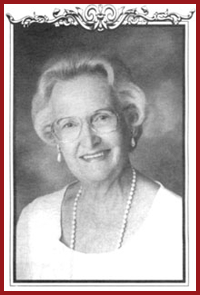
Betty Caperton Chavez, 2002 Doña Eufemia
The citizens of Valencia County have described Betty as a walking encyclopedia of New Mexico history. She was raised in Portales and has a degree in political science from the University of New Mexico. Not to be outdone by her famous author, Senator, Judge, Regent and Lt. Governor husband, Tibo J. Chavez, she became immersed in New Mexico history. Her love for history and community led to her involvement at the Harvey House Museum, Valencia Historical Society and the UNM Campus Cultural Series. She was named Citizen of the Year for 1998 by the Belen Chamber of Commerce and was deeply involved in the Oñate Cuartocentenario celebration. She helped organize the Harvey House display featuring original families and their descendants this resulted in the first Founder’s Day, to celebrate the Spanish settlers. Betty helped organize the Columbus Day Celebration and was among a group that went to Spain as guests of the Spanish Government. Most recently, she became deeply involved in opposition to the Popé statue that was installed in the Capital Rotunda in Washington DC. She contacted every legislator and researched and contacted the Director of Statuary Hall to explain the criteria to him. She arranged a radio talk show to discuss the issues and contacted historical societies. Betty has dedicated a large part of her life to the promotion and preservation of New Mexico Spanish culture.
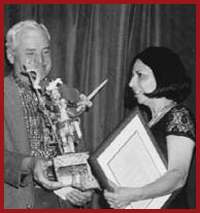
2001-Doña Sandra Jaramillo, 2001 Doña Eufemia
Sandra is the Division Director for Archives and Historical Services at the New Mexico State Records Center and Archives in Santa Fe, New Mexico. She has been with State Archives for over 32 years. Sandra has a Bachelor of Arts degree in History from the University of New Mexico. She is a Certified Archivist and a member of the Academy of Certified Archivists. Sandra has been honored by the Society of American Archivists, the Modern Archives Institute, the Society of Southwest Archivists, the Academy of Certified Archivists, and the Taos County Historical Society. Most recently she served as a consultant for the Pleasant Company and the American Girl Series publication of “Meet Josefina.” She also serves as an advisor to the Hispanic Genealogical Research Center. Originally from Taos County, she has conducted extensive research on cross-cultural marriages between New Mexican women and French and American traders during the period 1800-1846. Sandra is the author of Mis Abuelos, Magdalena Maes, and Women in Colonial New Mexico and has written many research papers. She has served on many boards and commissions promoting the advancement of our history and culture. She has further contributed by lecturing on the research, care and preservation of familial and historical documents.
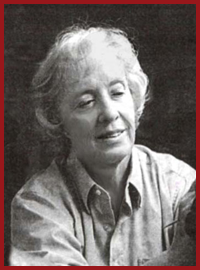
Doña Betty Sabo, 2000 Doña Eufemia
Betty’s signature is familiar to collectors throughout the Southwest. It has generally been in relation to award-winning oil paintings and graphics. Most of her exhibits have been in the Southwest. Her landscapes, many of which exemplify Hispanic Northern New Mexico, have been exhibited in New York City at the National Academy of Design, National Arts Club and American Artists Professional League. Betty is the ultimate volunteer. Her generous gifts of time, boundless energy and expertise have greatly benefited our city, county and state as exemplified by her service on numerous boards and foundations. Her fund raising abilities are legendary and many organizations have presented her with honors befitting a person of her dedication and devotion. She is also an accomplished sculptor and she, along with Sonny Rivera, created the La Jornada monument now in front of the Albuquerque Museum. The project thrust her into an often difficult and unpleasant situation. She demonstrated courage and valor by not giving up and publicly spoke of her admiration for the Hispanic people and the importance of their culture and history to the State of New Mexico.
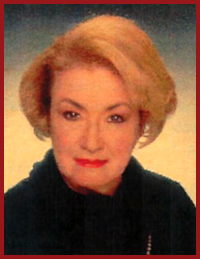
Adele Baca Hundley, 1999 Doña Eufemia
Adele was a State Representative for four terms, a City Councilor for three terms and an Environmental Planning Commissioner. While in the legislature she served on the Taxation and Revenue Committee and chaired the Interim Property Tax Stabilization Committee. She was born and raised in the South Broadway area and lived in Barelas for 35 years. No stranger to neighborhood association work she served as President of the Barelas Neighborhood Association and was a board member. She chaired the Economic Development Committee and was Vice President of the Downtown Action Team. Crime prevention was also an interest, she served with the CPTED program and other projects, and she served on the Mayor’s Homeless Task Force. Adele has always been proud of her Hispanic heritage. She was instrumental in helping us acquire approval and funding for the La Jornada Sculpture at the Alburquerque Museum.
